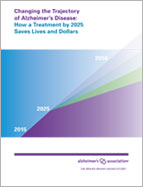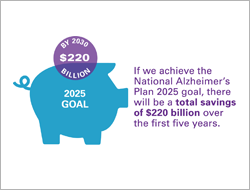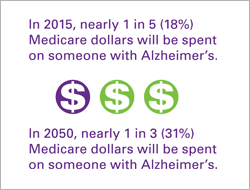 Without a breakthrough treatment, millions of baby boomers will spend their retirement years either living with Alzheimer's disease or caring for someone who has it. By 2050, nearly one in three Medicare dollars will be spent on people with the disease, crippling our nation. But what if we can achieve a breakthrough? |
| |||||||||||||||||
| Changing the Trajectory of Alzheimer's Disease, a groundbreaking report released today from the Alzheimer's Association, shows that if we develop a treatment by 2025 that delays the onset of Alzheimer's by five years, | ||||||||||||||||||
To achieve this goal, the report shares that an investment of $2 billion a year in funding — an amount called for by the research community — would be recouped in the first three years after a treatment is discovered.
| ||||||||||||||||||
This Blog AMICOR is a communication instrument of a group of friends primarily interested in health promotion, with a focus on cardiovascular diseases prevention. To contact send a message to achutti@gmail.com http://achutti.blogspot.com
Translate AMICOR contents if you like
Thursday, February 05, 2015
Changing the Trajectory of AD
Subscribe to:
Post Comments (Atom)









No comments:
Post a Comment